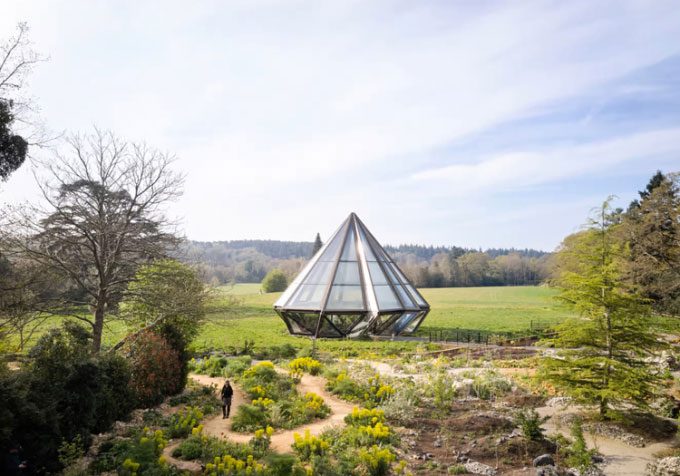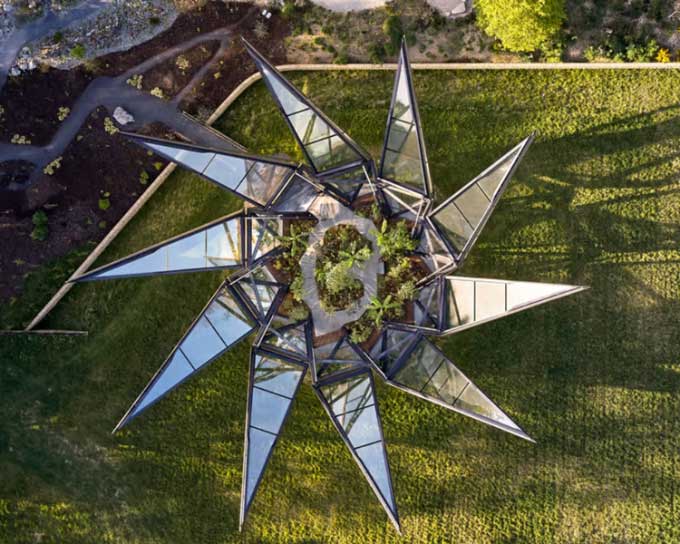The Glasshouse, spanning 141m2, cultivates rare plants and can open or close to protect its greenery based on weather conditions.
According to a report by New Atlas on June 29, the British company Heatherwick Studio has completed the construction of an impressive dynamic greenhouse. Named Glasshouse, the structure resembles a giant gemstone when closed and a striking crown when opened.

Glasshouse closed during cold weather to protect the plants inside, taking on a shape resembling a gemstone. (Photo: Hufton Crow)
The Glasshouse was built for the National Trust, an organization dedicated to preserving heritage in England, Wales, and Northern Ireland. This greenhouse is located at the edge of Woolbeding Gardens, a site within a historic estate in West Sussex, England.
The design of the Glasshouse is inspired by Victorian glass terrariums and features ten individual petals made of steel, glass, and aluminum. In cold weather, the greenhouse closes to protect the plants inside. On warmer days, the top gradually opens thanks to a hidden hydraulic system. This process takes about 4 minutes. The greenhouse then transforms into an open structure resembling a crown, allowing the plants to receive fresh air while ensuring they grow at ideal temperatures.

Glasshouse opens in about 4 minutes thanks to a hydraulic system. (Photo: Hufton Crow)
The interior area of the Glasshouse is 141m2, currently used to grow rare and delicate plants, along with some smaller plants and bananas. Surrounding the greenhouse is a larger garden. Before reaching the greenhouse, visitors will walk through an area inspired by the ancient Silk Road that linked Asia and Europe, featuring over 300 plant species.
“This is a project that is literally open. You walk through the beautiful garden and discover an original structure that resembles a gemstone, which then transforms into a crown as the greenhouse slowly opens,” said Thomas Heatherwick, founder of Heatherwick Studio.
The Glasshouse project was completed after 6 years of development, construction, testing, and planting. This is the second smaller-scale project recently undertaken by Heatherwick Studio, following the Tree of Trees project in Westminster.


















































